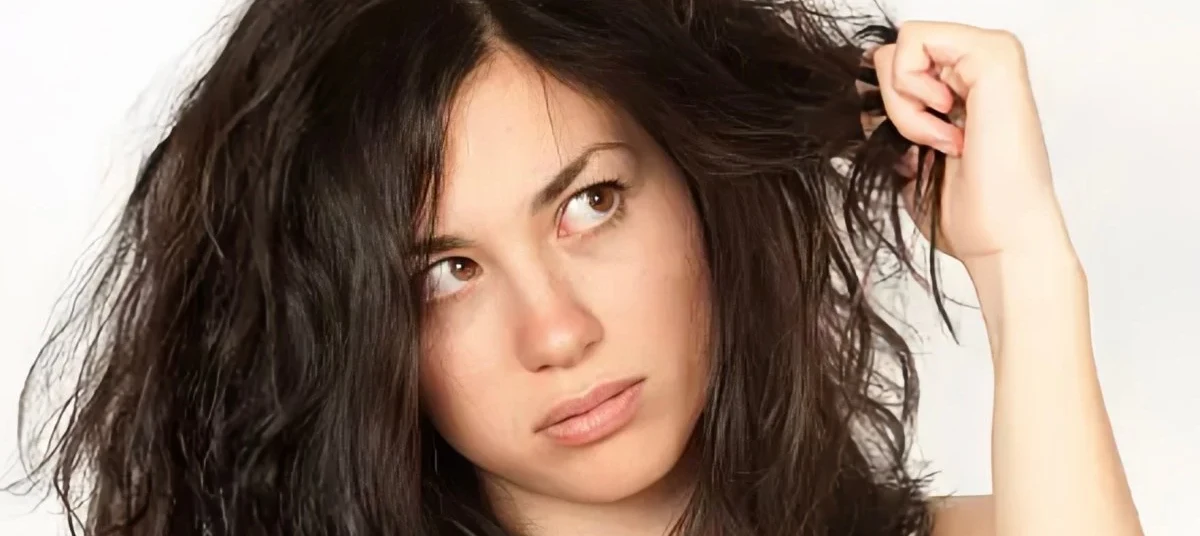Dreaming of sleek, shiny hair but nature has blessed you with fluffy and unruly locks? Here are some tips on how to tame and embrace your mane.

Fluffy Hair: Feature or Flaw?
That moment when you long for hair like in the commercials, you buy all sorts of products promising a wow effect, but the reality is always disappointing. Fluffy, porous hair can seem like a real challenge. It’s unruly, unpredictable, often tangles, and reacts to changes in humidity and temperature.
It might seem like this type of hair is a clear loss in the genetic lottery. But is that really the case? Maybe instead of constantly fighting your hair’s texture, it’s worth accepting that porosity is a natural feature of your hair that can be enhanced with the right care.
What is Hair Fluffiness?
Fluffiness is usually associated with high porosity in hair structure. Porosity refers to the level of gaps in the hair shaft and its ability to absorb and retain moisture.
Because of its high porosity, fluffy hair is highly sensitive to external conditions like humidity or dry air. This makes it seem dry, brittle, and difficult to manage.
Advantages of Fluffy Hair
We are accustomed to thinking of fluffy hair as a definite flaw. But we completely disagree. If your hair’s fluffiness is not related to damage, then it’s your unique feature that comes with its own benefits:
- Volume. Fluffy hair has natural volume and visually appears thicker.
- Styling flexibility. Thanks to its texture, porous hair holds styles better than straight and smooth hair, giving you a wide field for experimenting.
- It can be curly. Those who complain about fluffy hair are often owners of curls who haven’t yet unlocked their full potential. To test this theory, we recommend trying the Curly Girl Method.
How to Care for Fluffy Hair?
The foundation of caring for fluffy hair is hydration and protection from environmental damage.
Here are a few tips:
- Use masks and conditioners that deeply moisturize the hair.
- When conditioning, don’t squeeze out the water from your hair. Instead, add plenty of water and distribute the conditioner with a special comb (for wet hair) – the effect will surprise you.
- Look for proteins in your conditioners, as well as cationic surfactants and polymers (you can read more about this here).
- Try to use hot styling tools less often as they dry out your hair and make it even more porous.
- Use leave-in creams or lotions to maintain moisture and reduce fluffiness.
- If you love hair oils, apply them after the cream/lotion.
And of course, the best thing you can do for your hair is to accept it as it is, with all its unique features.
Remember: fluffy hair isn’t a flaw, it’s your uniqueness. With a bit of magic in care, you can fully reveal its potential and natural beauty. There’s no point in buying products hoping they will give you smoothness and glossy shine. Let’s be honest: no treatment can change the structure of your hair. But does it even need to?



Leave a Comment